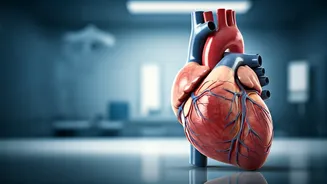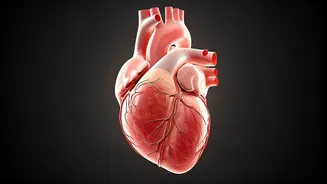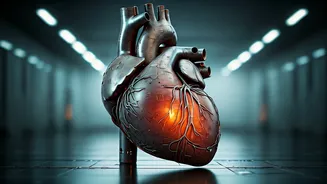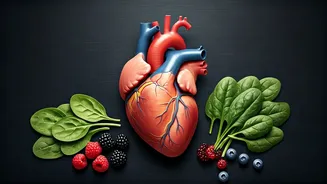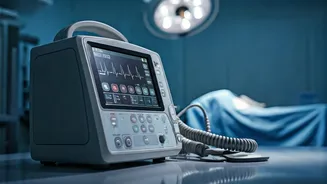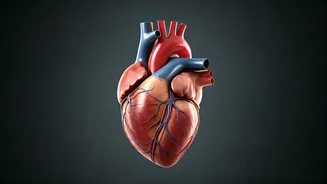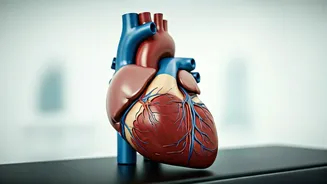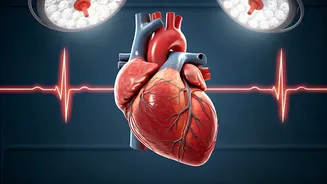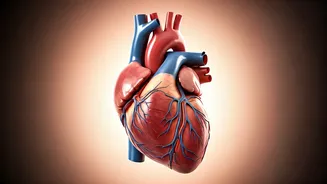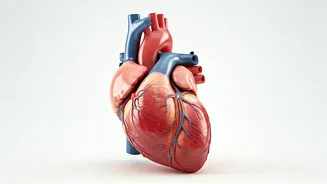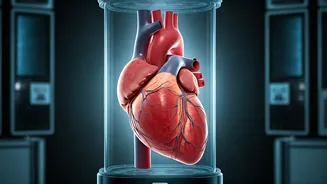Heart Attack Explained
A heart attack, also known as a myocardial infarction, arises when blood flow to a portion of the heart is abruptly blocked. This obstruction often results
from the buildup of plaque within the coronary arteries, a condition termed atherosclerosis. Over time, this plaque can rupture, prompting the formation of a blood clot that completely halts blood supply. Deprived of essential oxygen, the heart muscle begins to die. Common symptoms include chest pain or discomfort, often described as pressure or squeezing. This pain may radiate to the arm, jaw, back, or stomach. Additional symptoms can encompass shortness of breath, nausea, sweating, and lightheadedness. Prompt medical attention is vital, as early intervention can minimize heart muscle damage and improve outcomes. Treatment may involve medications to dissolve clots, procedures to open blocked arteries, or, in severe cases, surgery to bypass the blockage.
Cardiac Arrest Defined
Cardiac arrest is a sudden cessation of the heart's function, leading to the abrupt loss of blood flow throughout the body. Unlike a heart attack, which is a problem of blood supply, cardiac arrest is primarily an electrical problem. It typically results from an arrhythmia, an irregular heartbeat, that prevents the heart from pumping effectively. Ventricular fibrillation, a chaotic and rapid heart rhythm, is a common cause. Cardiac arrest causes the person to become unresponsive, cease breathing, and lose a pulse. Immediate treatment is essential. Cardiopulmonary resuscitation (CPR) can maintain blood flow to vital organs until advanced medical care, such as defibrillation (delivering an electric shock to restore a normal heart rhythm), can be administered. Without prompt intervention, cardiac arrest can be fatal within minutes.
Key Differences Unveiled
While both heart attack and cardiac arrest are life-threatening cardiovascular emergencies, they differ significantly in their underlying mechanisms and immediate effects. A heart attack is primarily a circulatory problem, caused by a blockage, whereas cardiac arrest is primarily an electrical problem, causing the heart to abruptly stop pumping. In a heart attack, the heart may continue to beat, albeit with reduced efficiency due to lack of blood flow, while in cardiac arrest, the heart's function ceases entirely. The symptoms also vary; chest pain is a hallmark of a heart attack, while the sudden loss of consciousness and lack of pulse are key indicators of cardiac arrest. The treatment approaches also vary. Heart attacks require interventions to restore blood flow, while cardiac arrest necessitates CPR and defibrillation to restore the normal heart rhythm and circulation.
Why The Confusion?
The terms "heart attack" and "cardiac arrest" are sometimes used interchangeably, contributing to the confusion. This can be problematic because the appropriate responses differ substantially. A heart attack can sometimes lead to cardiac arrest if the damage to the heart muscle disrupts the electrical system, resulting in a dangerous arrhythmia. The opposite is also true. Cardiac arrest, if not quickly addressed, can damage the heart and lead to a heart attack. Both conditions can present with similar symptoms, like chest pain and difficulty breathing, especially when initially happening, further blurring the lines. However, the outcomes and immediate needs are critically different, underscoring the necessity of accurate understanding. Therefore, educating the public about these differences is vital to promoting correct and timely responses to each emergency.
Actionable Steps to Take
Recognizing the symptoms of both conditions and reacting quickly can be crucial. If someone experiences symptoms of a heart attack, such as chest pain, shortness of breath, and radiating pain, it is vital to call for emergency medical help immediately. When dealing with cardiac arrest, the primary course of action is to call emergency services, then start CPR if the person is not breathing and has no pulse. CPR involves chest compressions and rescue breaths to maintain blood circulation and oxygen supply until medical professionals arrive. If an automated external defibrillator (AED) is available, use it as soon as possible, as it can deliver an electrical shock to restore the heart's normal rhythm. Training in CPR and AED usage is strongly advised for the general public, empowering individuals to save lives in critical situations.
Prevention Measures
Preventative measures are essential for reducing the risk of both heart attacks and cardiac arrest. Adopting a heart-healthy lifestyle is key. This includes maintaining a balanced diet low in saturated and trans fats, controlling cholesterol levels, and engaging in regular physical activity. Managing risk factors, such as high blood pressure, diabetes, and obesity, is critical. Avoid smoking and excessive alcohol consumption. Regular health check-ups, including blood pressure and cholesterol screenings, can help identify and address potential problems early on. For individuals at high risk, following their doctor's advice regarding medications and lifestyle modifications is crucial. Educating the public about the importance of heart health and promoting these preventive strategies can contribute significantly to reducing the incidence of these life-threatening events.
